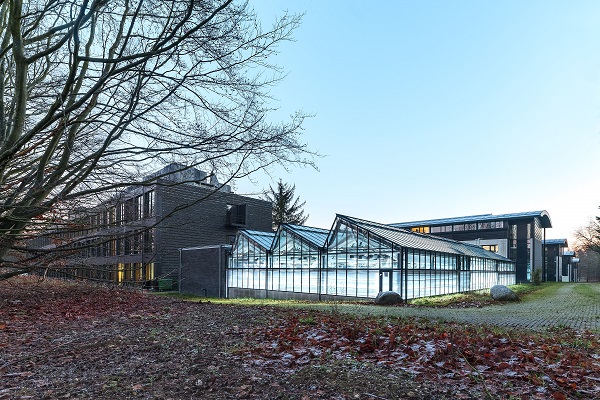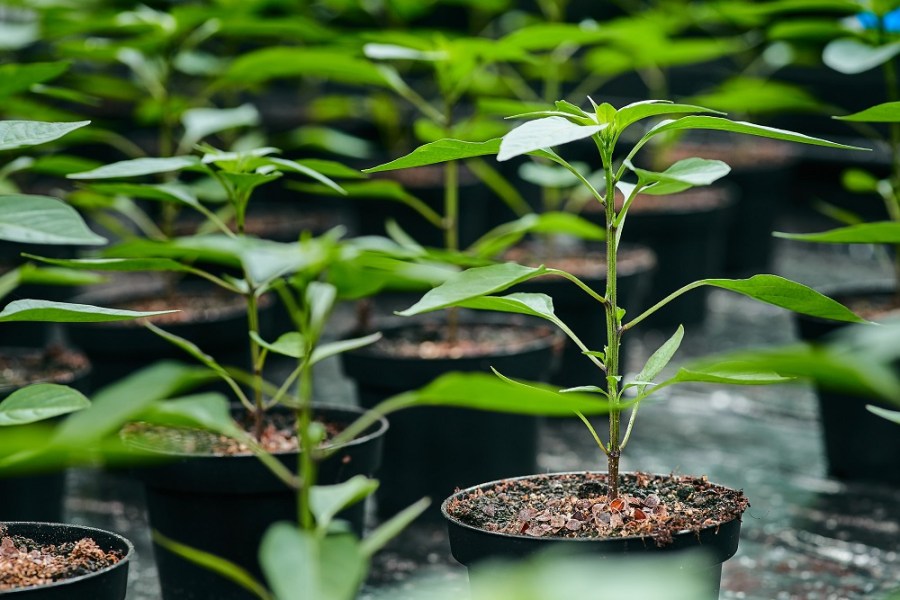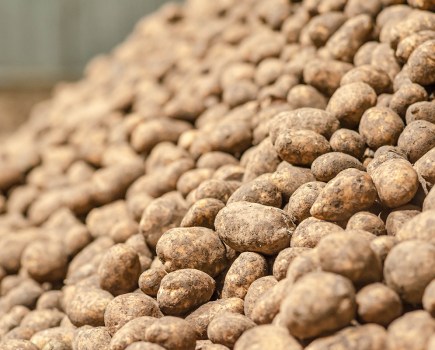A series of acquisitions has put FMC among the leading global agchem manufacturers. CPM travels to Copenhagen to find out what the company plans to bring to UK growers.
We’ve almost been under the radar, but we have one of the strongest pipelines in the business.
By Tom Allen-Stevens
Just a few years ago, FMC was a company virtually unheard of in the UK, but there’s a strong chance you’ve reached for one of its products in the past 12 months.
What’s more, you’re likely to hear a lot more from FMC over the next few years. It’s now one of the biggest global agrochemical R&D manufacturer without a seeds portfolio.

FMC is developing a strong offering in biologicals, centred at the company’s European Innovation Centre in Copenhagen.
As such, the company has a chemistry innovation pipeline bristling with new active ingredients – a total of 22, many of which are new modes of action and include new blackgrass herbicides. It’s also developing a strong offering in biologicals, centred at the company’s European Innovation Centre in Copenhagen, with some major market introductions planned for the early 2020s.
“We’ve come from having no visible presence in the UK, but we’re only 18 months into the new FMC, and we have always been working in stealth mode,” says FMC vice president and business director of the EMEA region (Europe, Middle East and Asia), Marc Hullebroeck.
Innovation plays centre stage within this, says FMC head of R&D for EMEA, Dr Duncan Aust. “When we have discussions with distributors, the reaction we get is ‘wow – we didn’t realise you had built this pipeline’. We’ve almost been under the radar, but we have one of the strongest pipelines in the business.”
FMC is a company with a 130-year history rooted in agriculture and innovation. It was started in the 1880s by Californian inventor John Bean, who set out to build a better insecticide spray pump. This he achieved and patented, developing into horse-led spray equipment and a company that changed its name in 1928 to Food Machinery Corporation.
Acquisitions into the chemical business followed, until in 2001 the Technologies side of the company was divested, and FMC Corporation became a pure-play chemical company. “But we were still relatively unknown in Europe, until we acquired Cheminova in 2015,” notes Marc. “This was less about the products and more about the footprint the acquisition offered.”
It was still a long way from being a true R&D manufacturer, however. “We stopped basic discovery in 2005. We didn’t have the critical mass at that time to take a product right from the start to market. But while we exited discovery, we never got out of the development game. Through licensing and partnership deals we were still able to build a pipeline of new products.”
Then in Nov 2017, FMC purchased a significant portion of the DuPont crop protection business, including its diamides and all its sulfonylureas. “The key asset along with the products was the entire discovery operation of the DuPont crop protection portfolio, including the innovation pipeline and its library of two million compounds.”
Today, FMC is a company with 6500 employees and annual sales of $4.5bn (£3.5bn), putting it in the top six global agchem manufacturers. In the UK, it’s probably best known for its SU herbicide technology – Ally Max SX (metsulfuron-methyl+ tribenuron-methyl) continues as one of farming’s most trusted brands for spring broadleaf weed control, notes FMC UK & IE country lead Simon McMunn.
“Our SU range is number one in the herbicide league table. But we also have other actives, such as clomazone – the capsule suspension formulation in Centium 360 CS demonstrates the extra value growers get from the technology we apply to our products.
“In potatoes we have Spotlight Plus (carfentrazone-ethyl) – already the most reliable stem desiccant on the market, its significance is set to increase with the loss of diquat.” In plant health, the ascophyllum range of seaweed-based biostimulants acquired through FMC’s purchase of Headland, such as Seamaxx, have “proven pedigree”, he adds.
Globally the company is market leader in many insecticide markets with the diamides, such as Cyazypyr (cyantraniliprole), Rynaxypyr (chlorantraniliprole), making up around a third of total sales. “Our heritage is in insecticides,” notes Marc. “If we have a weakness, it’s fungicides, where flutriafol is our lead product. It’s in this market that we’re looking at further acquisitions and developments.”
So what about this innovation pipeline? “The new active I’m most excited about is bixlozone – it will change the picture of grassweed control in the UK and elsewhere,” enthuses Marc.
Bixlozone is a new mode of action in the cereal herbicide market with pre and early post-emergent action on key grass species including blackgrass and ryegrass (see table below). “It’s an FMC heritage development and a sister of clomazone, suitable for cereals and oilseed rape, as well as rice, corn, potatoes and sugarcane.” Submitted for registration in 2018, it’s expected to appear first in Australia in 2021, while UK growers could be using it as early as 2022.
Two other herbicides in development come from legacy Cheminova, and both will bring a new mode of action into their respective markets. “Pethoxamid is not a new one, but new in the sense it was underdeveloped by Cheminova. Beflubutamide-M (the active isomer in beflubutamide) will be for EU and Asia Pacific,” says Marc.
“Tetflupyrolimet has a totally new activity on grasses and will change the herbicide market in rice. This is a crop where it is very difficult to get good control and resistance is a real issue. The active’s in development for rice and we’re testing it for other crops including cereals. Its activity is complementary in many ways with bixlozone, so will offer additional power against blackgrass.”
Fluindapyr will mark FMC’s entry into the SDHI fungicide market, due to be introduced as early as 2021 in the USA and then following on, probably two years later in Europe. “We are looking to launch other SDHI fungicides under third party licence.”
The majority of the new actives currently earmarked for development are still in the R&D phase. Most involve new modes of action, and many come from DuPont. “Will they all make it? No. But we’re dropping far more potential actives than we were before on the grounds they won’t make it through the tough European standards on endocrine disrupters, genotoxic and groundwater issues. These are the ones that make it through that rigorous selection,” notes Marc.
“What’s more, at the R&D facility we acquired in Delaware from DuPont, you have to fight hard for your MoA to be progressed – there are no ‘me-too’ products there.” And don’t expect any new SUs to come from this pipeline, he adds – the facility is now focused on entirely new chemistry.
But it’s this focus on the chemistry that FMC believes will earn the company the respect of growers. Unlike the other leading global agchem manufacturers with which it competes, FMC has no seeds or traits in its portfolio. “But these seeds need to be protected and coated and given the best start, and that’s where our technology will come in,” Marc points out.
And it’s the company’s broad portfolio, deep pipeline and now its discovery R&D that are the qualities on which he believes growers will judge FMC. “You don’t build a reputation in a new market overnight, but the products we already have deliver what growers expect. What’s more, we have significant resources and the scale to pursue new opportunities and chart our own future. It’s a journey I think UK growers would like to join.”
A brew to perfect the micro chemical factory
As you wander from one lab to the next, there seems to be no end to the flasks whirring around on automatic agitation, and transparent fermentation chambers busily bubbling away.
“They’re little biochemical factories,” says Dr Mark Harding, one of the managers at FMC’s European Innovation Centre, just north of Copenhagen. “It’s a bit of a soup, so we have to do some chromatography to find out what they produce and target identification of the metabolites.”
He’s referring to the bacteria jiggling away in a shaker flask – a sample among thousands, along with fungi and other micro-organisms at the facility that may one day put their metabolites to work to keep crops healthy and free of disease.
The EIC is FMC’s global centre for research into biologicals. It has around 50 scientists among the 160 employees on site, with the first biological products already launched in Brazil, USA and Asia. The company aims to be among the number three in the world supplying this market. There’s a busy pipeline with biostimulants, biofungicides, bionematicides, bioinsecticides and crop nutrition products, planned for introduction into both broad-acre and fruit and vegetable markets from the early 2020s.
The centre’s focus is integrating three distinct areas, explains Duncan Aust – biologicals, crop nutrition and seed treatment. “You’re limited with the amount of chemistry you can put on a seed before you begin to see some deleterious effects,” he says. “But put the right biological on a seed and it will go back into the soil and grow and multiply – it’s a little chemical factory on that seed, so you’re not limited.
“Bring in the right nutrition and you can harness the correct combinations to ensure you give that crop the best start.”
And it’s not a case of dispensing with chemistry altogether. “With so many products losing approval, this puts huge pressure on those that remain. But if done smartly and correctly, the opportunity is there to complement the chemistry.”
FMC trials have shown the effect with Bacillus subtilis and Bacillus licheniformis bacteria, sold as Quartzo and Presence in Brazil. It protects yields in the presence of nematodes, giving on average a 1t/ha yield advantage over untreated sugarcane. But augmenting chemical treatment with the bacteria brings a 0.4t/ha yield gain over chemistry on its own. “Without a shadow of a doubt, biologicals deliver a yield advantage,” says Duncan.
But biologicals discovery is a very tricky task. As with chemicals, it’s a matter of initially screening the micro-organisms and then looking in more detail at those that appear to have an effect to determine what’s causing it. “We go to the genes, and there are now ways to cost-effectively sequence the DNA of targets of interest,” he notes.
“But you should never underestimate the complexity of micro-organisms. They can produce ‘happy compounds’ that protect your seed one day, then ‘sad compounds’ that leave it vulnerable the next.”
Even when a biological product is found, and shown to perform consistently, it has to be formulated correctly, into water or powder-based systems with a minimal amount of solvents that don’t have a detrimental effect, and scaled up to industrial fermentation processes. Here FMC has a strategic collaboration with Danish bioscience company Christian Hansen, that brings in specialist expertise. “That’s the advantage of being based in Denmark – it has probably the best fermentation knowledge in the world,” says Duncan.
The complex nature of biologicals means there are few products in the registration process and none yet for broad-acre crops in the UK. “While biostimulants, that enhance growth, have a relatively straightforward approval process, biofungicides can take a good five or more years, so it’ll be the mid 2020s before they have a significant presence in the market,” he notes.
“But as every month goes by, we’re gaining a better understanding. If you look at the soil microbiome, for example, there’s a huge amount we don’t know, but our learning is accelerating fast, and we’re getting to the bottom of what differentiates a healthy soil from one that’s unhealthy.
“Combine that understanding with the consistency of product and formulation expertise which have always been strengths of FMC, and I think there’s every reason to be excited about the products we’ll be using in years to come,” concludes Duncan.
FMC UK product pipeline

Company profile
CPM would like to thank FMC for kindly sponsoring this article and for providing privileged access to staff and materials used to help put the article together.




